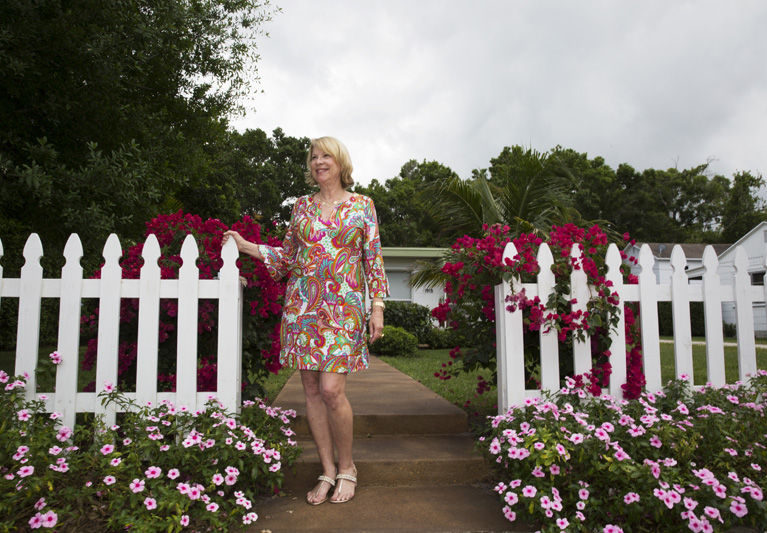
VERO BEACH — The idea of an Arts Village near Vero’s Old Downtown – where artisans would live and work in the same house, murals would adorn buildings, and a sculpture garden, water wall and performance plaza would become focal points of a neighborhood with bicycle trails and a shade tree corridor – on the surface has a lot of appeal.
And while many are skeptical that the vision, nicely detailed in a plan released in February, will ever become a reality, several South Florida entrepreneurs are putting their money where their dream is – purchasing properties in the proposed Arts Village area in hopes of turning a shabby neighborhood into a revitalized one.
Miami artist and real estate investor Ross Power, who helped launch what is today a successful arts village in Miami, is one of them.
In a recent conversation, Power rattled off names of people who have bought properties in the proposed Vero Arts Village, including Michael Rechter, a South Florida entrepreneur who has revitalized a number of commercial properties in Vero and just got approved by the city to open a brewery and restaurant in the old diesel power plant adjacent to the arts village area.
Others include Don and Suzanne Broyles, landscape nursery owners from Homestead, and Neli Santamarina, longtime real estate broker for Gloria and Emilio Estefan, who owns a motel on the island here and a small shopping plaza on Old Dixie downtown where she recently opened a gallery called Raw Space at Edgewood.
Prominent island real estate broker Cindy O’Dare also has purchased buildings in the area. She said she bought her first property in the neighborhood at 1926 19th Avenue about three years ago not knowing an arts village would be proposed.
After she heard about the arts village concept, O’Dare assembled three clustered properties at 1925 18th St., about a block and a half from her initial acquisition. Of her three adjacent properties on 18th Street, a two-level former apartment house off the street has been gutted with hopes of converting it into an artist loft, O’Dare said.
“I love the area and think the arts village is a great idea,” she said. “Ross is a mover and shaker who knows how to get things done. He was instrumental in revitalizing the Design District in downtown Miami. We are lucky to have him.”
The quality of the plan produced by architects and urban designers with the Treasure Coast Regional Planning Council is another plus for the arts village concept. It details attractive ideas for murals, signage, public performance areas and historically evocative building types in the Edgewood neighborhood, which is bounded by State Road 60 on the north, 20th Avenue on the west, 14th Avenue on the east and 18th Street on the south.
The game plan is for the city to allow new low-key retail and commercial uses in this somewhat dilapidated, mainly residential section as part of a “Cultural Arts Village District” that will be supported by the city but funded by private dollars.
The proposed arts village area has a mixed building stock with multi-family housing, modest single-family homes, houses old enough to border on historic, some ramshackle structures and some commercial property. Buildings range from old-time Florida cracker-style houses and Spanish colonial revival to art deco and more modern 1960s housing. Absentee property owners are also part of the dynamic, said Tim McGarry, Vero Beach city planning and development director.
“Edgewood is downtrodden and it reminded me of the neighborhoods I have helped revitalize,” said Power, who has a studio in the proposed district at 1916 20th Avenue. He noted it was a 1934 two-bedroom home with carriage house.
The proposed arts village would be more residential than the existing downtown arts district, which leans toward commercial.
Vero Beach City Manager James R. O’Connor said the arts village concept could bring about an expansion of what’s happened in the city in the last four to five years, with multiple galleries and restaurants opening downtown, a few blocks from the proposed village.
“The elements to address are the economic viability and what people are demanding,” O’Connor said.
The city is buying into the concept – but not with money. O’Connor said the city has not earmarked any infrastructure improvements such as new sidewalks or paved trails specifically for the proposed arts village, but the City Council did recently adopt an arts village report and directed staff to work with the Cultural Council of Indian River County on the idea.



